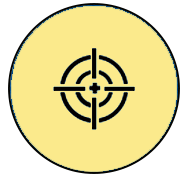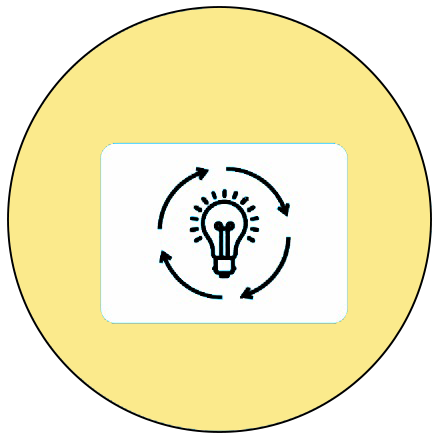
Measurement
Week 3 – Measure Liquids
Learning Outcome
Measures volumes of containers using uniform nonstandard units like a cup/glass/tumbler.
 Objective
Objective
Children will be able to measure liquids in terms of nonstandard objects.
 Prerequisites
Prerequisites
- Understand that capacity varies according to the size of the containers.
- Compare and organise two and three objects based on their capacities.
- At the start of the class, the teacher can assess the comprehension by showing two containers with different capacities and asking the children to identify the one with more capacity and the one with less capacity.
 Pre-teach Vocabulary
Pre-teach Vocabulary
Children should be familiar with the terms big container, small container; more capacity, and less capacity.
Introduction: Measure Liquid
Materials required:
Containers with different capacities.
Revision: Measure Weight
The teacher can start by summarizing the previous week’s lesson on measuring weight using nonstandard objects and a two-pan simple balance scale. The teacher then introduces the concept of measuring liquids.
Half or Full?
Children are now listening (or watching, if a video is shown) to the story of the twins Simie and Bomie.
Simie and Bomie are twins who are always wondering about the why behind things. One day they were very thirsty when they returned home from playing.
Simie: Mummy. I am thirsty. Can I drink a glass of lemon juice?
Bomie: Mummy I, too, want lemon juice.
Mummy: My dears, take those glasses; I will give you a cup of lemon juice.
Simie and Bomie bring a glass each; the mother pours a cup of juice into each glass.
Simie: Mummy, you gave me only half a glass, but you gave Bomie a full glass. I also want a full glass.
Mother: [Smiles] Takes another glass identical in size to Bomie’s, removes the glass of lemon juice from Simie’s hand, and pours the juice into the smaller glass.
Mother: Now look, Simie, your glass too is full.
Simie: Ah, yes, but how?
Mother: The glass you took first is big. It can contain twice as much as Bomie’s glass. You see, if I pour two cups, it will be completely full.
Simie takes a vessel, and Bomie picks one of comparable size.
Simie: Mummy, give me a cup. I’ll measure how many cups of water are needed to fill this vessel.
Bomie: Mummy, please give me also a cup. I’ll also determine how many cups of water are needed to fill this vessel. [Mother hands a small cup to Simie and a big cup to Bomie.]
Simie: Mummy. I can fill this vessel with 10 cups of water.
Bomie: Mummy, I could fill this vessel with 7 cups of water. Why do we obtain varied measurements?
Mummy: Bomie. Your cup is bigger than Simie’s, yet your containers are of equal size. So you could fill it with 7 cups of water, and Simie could fill it with 10 cups of water.
Now, fill the same vessel with this tumbler, then with this bowl, and tell me the capacity in terms of tumbler and bowl.
Simie and Bomie engage in the measuring exercise and then give their measurements.
Simie: Mummy, the vessel’s capacity is twelve tumblers.
Bomie: Mummy, the vessel has a capacity of 15 bowls.
Simie: Mummy, because the vessel is the same, can we say the capacity of the vessel is equal to 7 large cups, 10 small cups, 12 tumblers, or 15 bowls?
Mother: Yes. You are correct.
Simie and Bomie: We will discuss this in math class tomorrow, and we will play the “filling with various objects” game with our friends. Thank you, Mama.
Video: Introduction – Half or full – Coming soon
ISL Video: Introduction – Half or full – Coming soon
Teacher: Simie and Bomie learned how to measure the capacity of containers using various measuring objects. Now let us also learn how to measure liquids.
The teacher proceeds to engage the children in liquid measurement activities.
Activity 1: Measure the Capacity
Objective: To measure the volume of liquid in a container using nonstandard units.
Importance of the activity for children:
Helps in developing:
- Fine motor skills (Holding, hand-eye coordination, pouring water)
- Gross motor skills (Bending)
- Cognitive skills (Learning to measure, concentration)
- Social skills (Working in group)
- Language skills (Concept formation like ‘capacity’, and ‘measure’)
- Emotional skills (Promotes a sense of achievement that boosts self-esteem and encourages pride in learning new skills).
Resources required:
Containers of different sizes (easy to handle by children), 5 empty similar steel pots of equal size (medium size), and a big bucket of water.
Setting for the activity:
The activity can be done indoors or outdoors depending on the available space.
Type of activity: Group activity
Preparation of activity:
Ensure that the things required are kept ready.
Procedure:
- Organise the class into 5 groups.
- Keep 5 empty, similar medium-sized steel pots with enough room in between.
- Keep a large bucket of water in a convenient place for all 5 groups.
- Provide each group with 5 different measuring containers, such as mugs, tumblers, bowls, steel vessels, and cups. [Any container that can hold liquid and is safe for children to handle]
- Allow children to use measurement containers to fill the respective pots with water from the bucket.
- Let group members take turns filling the pot.
- Ensure that the children transfer water from the measurement container to the steel pot without spilling.
- Have one child from each group keep track of the amount of units poured.
- When all groups have finished filling the pot, record the group-wise results on the board.
Role of the teacher: Demonstrator, observer and facilitator.
Observations:
Observe the activity to ensure that the children can fill the steel pot without spilling.
The teacher can note down his or her observations and guide the children accordingly
Suggested variation in the activity:
Given two container objects of different sizes, children can fill them with the same measuring object, express the capacity of containers in terms of the measuring object, and determine which object has the bigger capacity. Another group can be given the same container objects of two different sizes as the first group, but they must fill them with a different container object and discover the one with the highest capacity. Both groups can compare their results.
Conclusion:
Children will learn to measure the volume of liquid in a container in nonstandard units.
Video: Measure the capacity – Coming soon
ISL Video: Measure the capacity – Coming soon
Assessment: Measuring liquid
Fill and colour the following images in Column A and B as instructed.
Worksheet: Assessment – Measuring Liquids – Coming soon
Worksheet: Assessment – Measuring Liquids (Enlarged) – Coming soon
Check list for teacher:
| Activity | Yes | No | Sometimes |
| Children can: | |||
| Find the capacity of a container in nonstandard units | |||
| Measure the volume of liquid in a container in nonstandard units | |||
| Complete the activity in the given time | |||
| Do the activity independently | |||
| Express verbally and through actions, expressions or gestures | |||
| Enjoy teamwork, appreciate others and is willing to learn from others |
Home Activity
To reinforce the concepts learned in the class, the following worksheets can be given to children to complete at home. The teacher can follow it up the next day.
Worksheet: Measure the Capacity of the Bucket – Coming soon
Worksheet: Measure the capacity of the bucket (Enlarged) – Coming soon
Worksheet: Fill and Find the Capacity – Coming soon
Worksheet: Fill and Find the Capacity (Enlarged) – Coming soon
Cross-Curricular Connection:
- Art Class:
Children can be given an outline image of objects and asked to draw a similar object bigger than the image outline given and colour the bigger object in one colour and the smaller object in another colour.
Another drawing sheet with an outline image of objects can be given, and children may be asked to draw a similar object smaller than the image outline given and colour the bigger object in one colour and the smaller object in another colour. - Language Class:
The degree of comparison can be learned by demonstrating two different things, one with more capacity and the other with less capacity. Containers of different sizes can be displayed, and children can be asked to name the container, compare it with another container, and say which container holds more or less than the other container. Thus, they learn degrees of comparison.
Adaptations for addressing learner variability: Adaptations and strategies – Coming soon
Teacher Resource Document – Coming soon
| Source and Attribution of images: All images used in the above Assets and Aids are originally created. |
| This digital material has been developed by the Sri Sathya Sai Vidya Vahini Inclusive Education Project, a unit of Sri Sathya Sai Central Trust, Prasanthi Nilayam, as a collaborative offering in the service of our nation. |